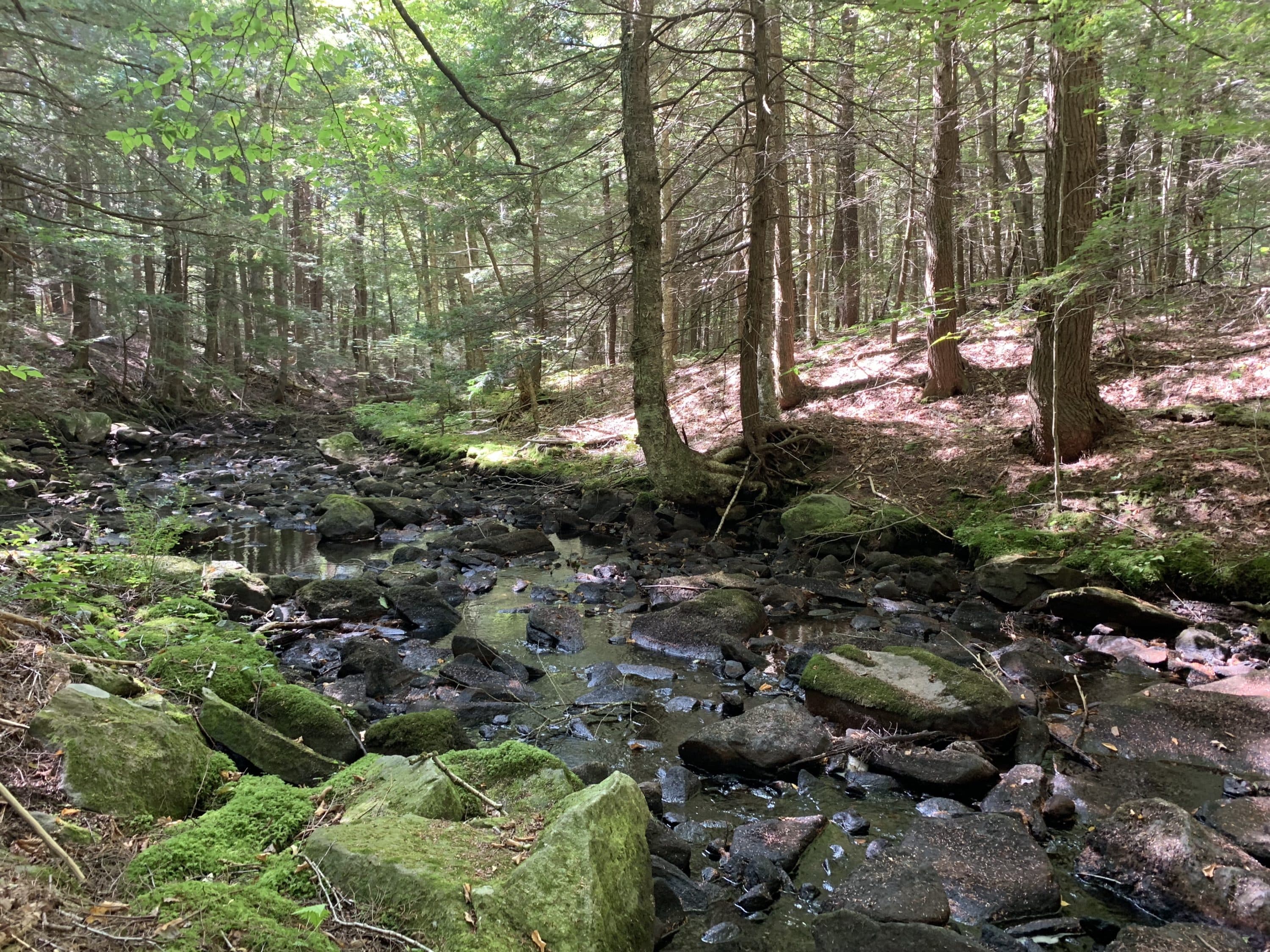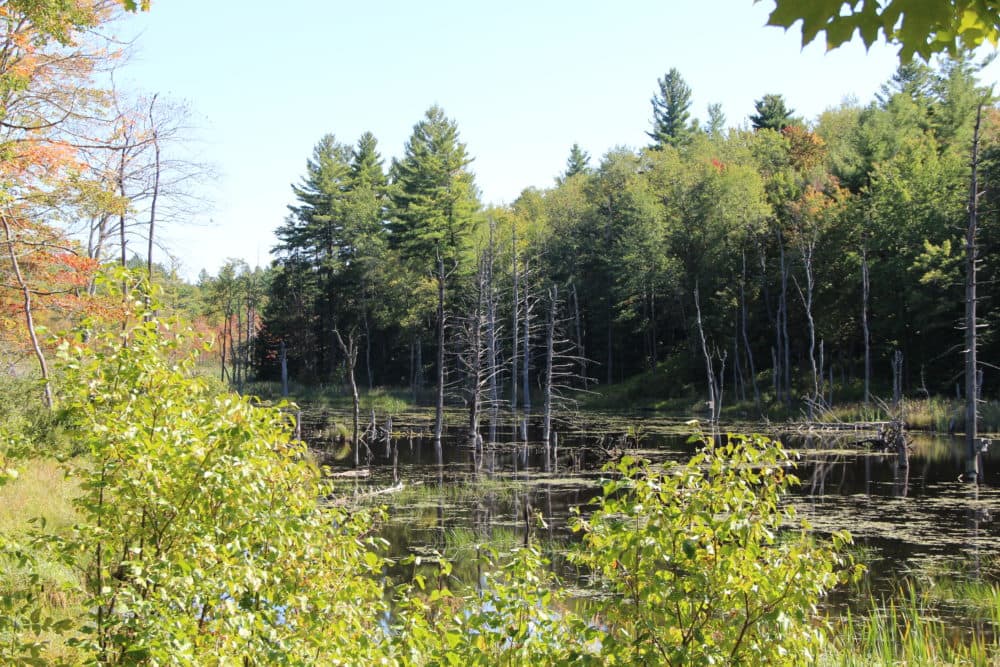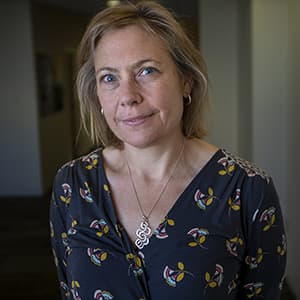Advertisement
Program will pay Mass. landowners to use 'climate-friendly' forest management

With deep woods flanking the Mass. Pike and leaf-peepers flocking to the Berkshires, it's easy to spot that much of Massachusetts is covered with trees.
More than 60% of the state is forested, ranking Massachusetts eighth in the country by percent of forest cover. Some towns in western Mass. are 90% forested.
What's perhaps surprising, though, is 79% of those forests are privately owned, with most held by families and individuals. That's a result of the region's history: farmers clear-cut forests centuries ago; much of that farmland has reverted to forest and been handed down through generations, divvied up among heirs. The average parcel size of forest land in Massachusetts today is just 18 acres.
"The parcels tend to keep getting smaller and smaller as pieces are chopped off," said Mike Mauri, a consulting forester in western Massachusetts. "Some of them are so small that, you know, you're starting to get in the gray area between, 'Is it just part of someone's backyard or is it actually, technically a forest?' "
A new program created by the American Forest Foundation and The Nature Conservancy will pay forest owners in western Massachusetts, Vermont and parts of New York to practice "climate smart" forestry — managing forests to both survive the climate crisis and store as much carbon as possible over the next two decades.
"Forests in the U.S. offset about 15% of the country's annual emissions, and some recent studies have shown that you could almost double that with the right actions," said Richard Campbell, national director for landowner engagement for the American Forest Foundation. And with so much forest in the hands of small landowners, "they are central players."
The Family Forest Carbon Program targets preservation-minded landowners who own somewhere around 30 to 3,000 acres of forest. To enroll, owners will work with a forester to develop a 20-year climate-focused management plan tailored to their particular forest.

"There are a range of climate-smart forestry practices, and there is no one-size-fits-all solution to every forest," said Laura Marx, a climate solutions scientist with The Nature Conservancy in Massachusetts. "Forests are different; they're in different conditions. They've had different histories of management. They're facing different threats besides climate change."
For example, she said some forests grapple with invasive plant species, or deer eating baby trees. In other forests, cutting down certain trees could help others thrive.
By signing on, owners annually receive $10-$15 per acre for 20 years. That's not enough to make anyone rich, says Marx, or to compete with money offered by a developer. But it should cover the costs of climate-smart forest management.
The American Forest Foundation and the Nature Conservancy then will measure carbon stored by a random selection of forests enrolled in the program, comparing them to U.S. Forest Service plots. (The U.S. Forest Service measures carbon, and other things, on privately-owned forests across the country every year.) If the program's forests stow away more carbon than the U.S. Forest Service plots, then that additional carbon will be sold on the carbon markets, to companies or institutions trying to meet carbon-reduction goals.
"It's very different from existing carbon-offset programs, because it pays a landowner to do forest practices that we know from our research and modeling will have carbon benefits, but the carbon is only sold once it is verified," Marx said. "It's not hypothetical carbon."
This approach is designed to counter one of the major criticisms of carbon-offset programs — that many don't draw additional carbon out of the atmosphere, and simply provide cover for polluting industries that want to appear carbon-neutral.
Jonathan Thompson, a senior ecologist at Harvard University's Harvard Forest, called the Family Forest Carbon Program "a good step in the right direction." But he was concerned that the type of people who sign up would have done climate-smart forestry anyway.
"You're going to do that anyway, and now Delta Airlines is polluting on a credit that you sold," he said. "There's a tremendous capacity to use the forest to sequester carbon. I just don't want to sell offsets against it. I would much rather just pay the people because as a society we think it's good."
Still, others like Campbell with the American Forest Foundation, say public funding and philanthropy won't fix forest management for private lands, or the climate emergency.
"In order for the program to be scalable, so that it's meaningful to the landscape or to the climate, it has to be based in a market solution, and this is the market solution that we have," he said.
A 2021 report from researchers at Clark University found forest loss in New York and New England releases 4.9 million metric tons of carbon dioxide equivalent into the atmosphere each year. Massachusetts alone is losing about 5,000 acres of forest each year, according to Mass Audubon.
Proponents of the new program hope it will counter this loss, and promote the multiple benefits of forests.
"We're not purely focused on carbon — we're really trying to strike the balance across all of the values a forest is providing: carbon, wildlife, water, wood. And so the practices we're offering are really consistent with a lot of long-term thoughtful management goals," Campbell said. "I think the the time is right for it. The urgency is here."
